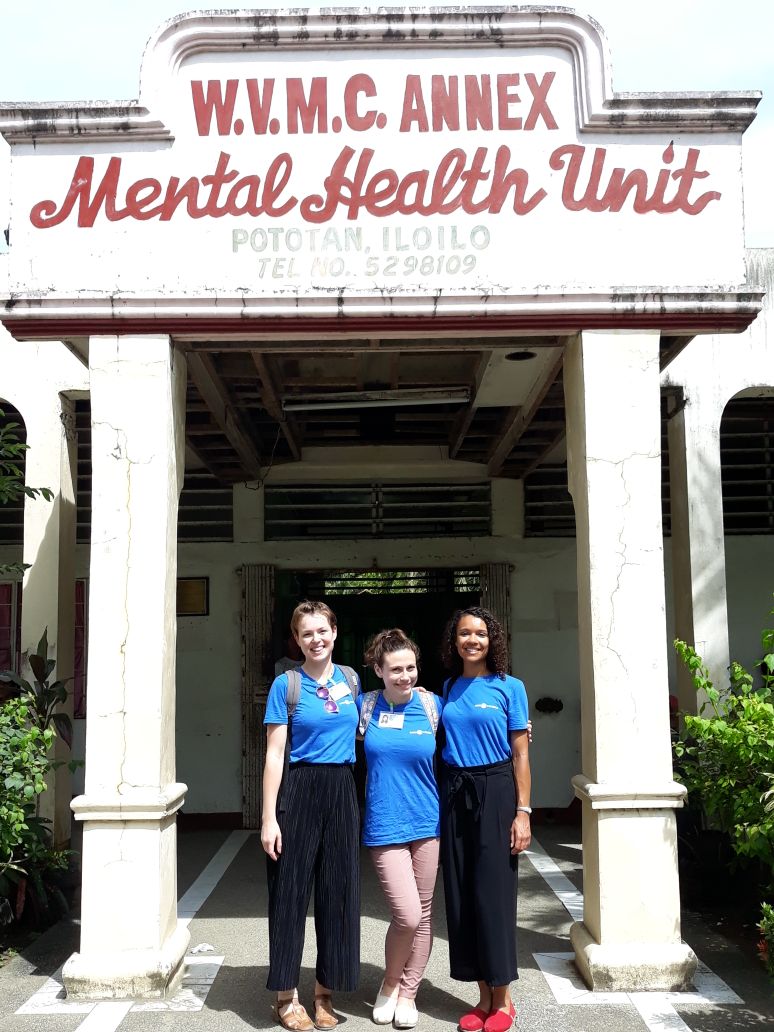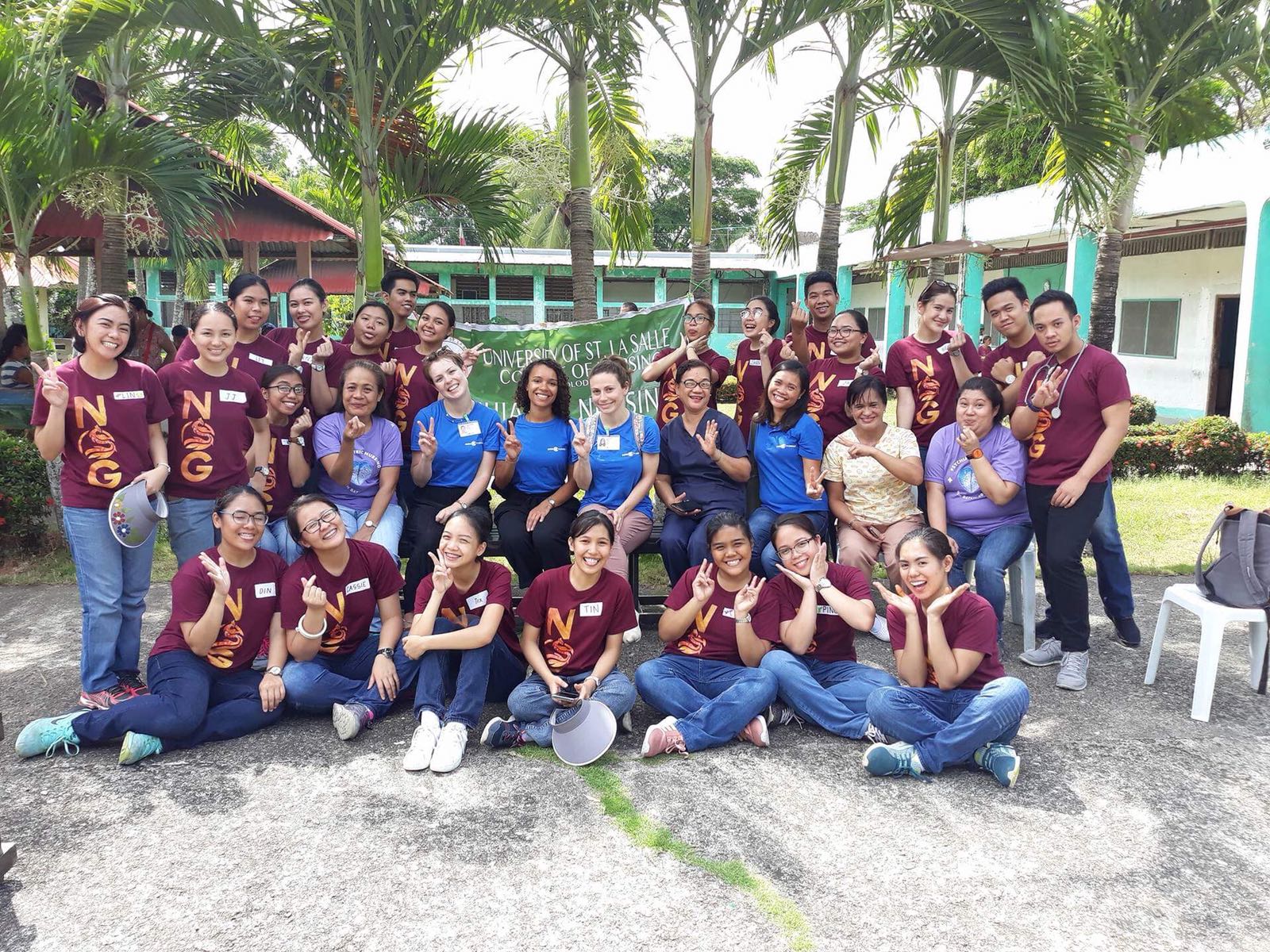University of Nottingham 2018
 I undertook my placement in a tertiary teaching and training hospital run by the Philippines Department Of Health (DOH).
I undertook my placement in a tertiary teaching and training hospital run by the Philippines Department Of Health (DOH).
The hospital was established in 1940 as an emergency hospital for casualties of World War II.
In 1984, the hospital was upgraded to a 200-bed capacity and hired 164 personnel. At that point, it was reclassified as a regional hospital.
The hospital now has twelve accredited departments supported by over seven hundred staff, eighty-two of whom are resident physicians.
The hospital aims to provide comprehensive, compassionate, affordable, culture-friendly, effective, efficient, and integrated healthcare to the public.
I was placed in the Psychiatry department for my first three weeks.
I timed my arrival well — it was at the same time as a new batch of Filipino medical students appeared. We were all introduced to the department together.
 I found everyone extremely friendly and welcoming. The interns even helped me translate patient consultations and their notes.
I found everyone extremely friendly and welcoming. The interns even helped me translate patient consultations and their notes.
I accompanied doctors to see patients in the outpatient clinic and interviewed patients on the ward itself. I also visited the psychological assessment department and observed and assisted in ECT.
I even had the unique opportunity to visit a mental health rehabilitation unit and the women and children's protection unit.
I enjoyed assisting in the outpatient clinic because I was exposed to a lot of patients. It also helped me gain insight into the lives of more economically disadvantaged Filipino people.
Substance misuse is prevalent in the Philippines. A lot of people presented with alcohol addiction or withdrawal and substance-induced psychosis.
One day, I visited a mental health unit. It was a rural rehabilitation centre for people convicted of drug-related crimes.
In the Philippines, if someone is caught under the influence or in possession of drugs, they have the option of attending rehabilitation. They are required to attend for six months to complete a course in drug abstinence, rehabilitation and education.
My impression of this centre was that it was an excellent facility. It produced low re-offence rates, and was a surprisingly progressive way of dealing with the local drug epidemic.
During my time in the psychological assessment department, I observed government employees being assessed and screened for any psychological problems that might impact their work.
 This was interesting because this isn’t something we do in the UK. I wondered if it was entirely necessary, especially considering the local healthcare system is so resource-limited.
This was interesting because this isn’t something we do in the UK. I wondered if it was entirely necessary, especially considering the local healthcare system is so resource-limited.
However, one of the local psychologists explained to me that psychological screening was necessary. This was thanks to the high prevalence of substance abuse in the Philippines.
Additionally this particular department was privately run. This meant clients had to pay a small fee to undergo their assessments. And this meant fewer government resources were taken away from providing basic care to the population.
I was also given an opportunity to observe and assist with ECT sessions.
This was a great honour because the hospital hadn’t had a patient requiring ECT for more than two years prior. What’s more, there was only one appropriately trained doctor and one ECT machine in the whole region.
 The ECT patient was a 28-year-old female diagnosed with schizoaffective disorder. She needed ECT treatment three times a week.
The ECT patient was a 28-year-old female diagnosed with schizoaffective disorder. She needed ECT treatment three times a week.
The ECT was performed in the operating room, which gave me the opportunity to see the kinds of resource in other departments.
It was rewarding to hear that the patient's mother reported an improvement in her daughter's symptoms over the course of the 15 ECT sessions.
I spent my final week in a rural provincial hospital on a small neighbouring island.
The hospital was so small and remote that they only had one ultrasound machine. If patients were too unwell to be seen there, they had to travel by boat to the mainland to receive specialist treatment.
I spent part of my time there in the general outpatient clinic. There, I assisted the nurses by taking the patient's vital signs.
 I got the sense that the local nurses were doubtful as to how helpful I would be in their busy department. But by the end of my first shift, they were immensely grateful of my help. They asked me to come back again, which was deeply satisfying.
I got the sense that the local nurses were doubtful as to how helpful I would be in their busy department. But by the end of my first shift, they were immensely grateful of my help. They asked me to come back again, which was deeply satisfying.
I spent another day at the antenatal and family planning clinic. The doctor supervised me as I conducted abdominal palpations and gave depo contraceptive injections.
I was pleased to see that contraception is free for women in the Philippines.
 Abortions, however, are not legal in the country. I was told that many women pay for illegal 'back street' abortions.
Abortions, however, are not legal in the country. I was told that many women pay for illegal 'back street' abortions.
I spent some of my time in the Emergency Department — I was shocked to see such young patients presenting with strokes.
One of the nurses explained to me that this is because there is a high incidence of uncontrolled hypertension in the Philippines. This is genetic and caused by diet, i.e. extremely high sugar and saturated fat intake.
It broke my heart to see so many children in the paediatric ER with completely rotten teeth. I was informed that this was from consuming excess sugar and poor oral hygiene habits.
My impression of healthcare in the Philippines is that it is great despite its limited resources.
The hospitals are full of friendly, dedicated staff who will do their utmost to help as many patients as possible.
Read more about our Electives in Asia, where you'll discover various options in the Philippines and other exciting countries across the continent.









